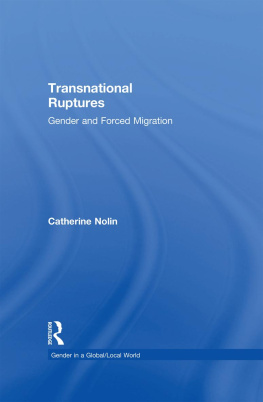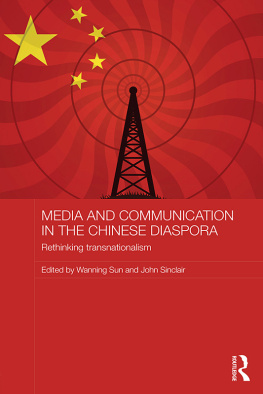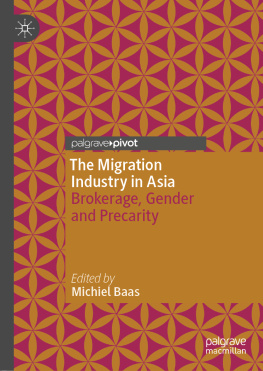
Chinese Transnational Migration in the Age of Global Modernity
The term circulatory transnational migration best describes the unconventional migratory route of many contemporary Chinese migrants that is an unfinished set of circulatory movements that these migrants engage in between the homeland and various host countries. Return migration, step migration to a third destination, and the astronauting strategy are all included within this circulatory migration movement wherein returning to the country of origin does not always mean to settle back to the homeland permanently; while step migration also does not necessarily mean to re-migrate to a third destination country for a permanent purpose.
Liu takes a longitudinal perspective to study Chinese migrants transnational movements and looks at their transnational migratory movements as a family matter and progressive and dynamic process, using New Zealand as a primary case study. She examines Chinese migrants initial motives for immigrating to New Zealand; the driving forces behind their adoption of a transnational lifestyle which includes leaving New Zealand to return to China, moving to a third country typically Australia or commuting across borders; family-related considerations; inter-generational dynamics in transnational migration; as well as their future movement intentions. Liu also discusses Chinese migrants conceptualisation of home, citizenship, identity, and sense of belonging to provide a deeper understanding of their transnational migratory experiences.
Liangni Sally Liu is a Senior Lecturer in the School of Humanities at Massey University, New Zealand. She was previously a Postdoctoral Fellow in the Asian Migration Cluster of the Asia Research Institute, National University of Singapore (20132014), and a Postdoctoral Fellow in the Research Office, Auckland University of Technology. Dr. Lius research interest is in Chinese transnational migration. Her broader research interests also include the intersection of migratory mobility and sexuality, ethnic relations between migrants and mainstream/indigenous people, and the media influence on ethnic relations. Her research work has been published widely in the forms of book chapters and research article in high-ranked peer-reviewed journals. She has been awarded the Marsden Fund (Fast-Start) from the Royal Society of New Zealand in 2016 and is conducting a project entitled Floating families? New Chinese migrants in New Zealand and their multi-generational families.
Routledge Studies in Asian Diasporas, Migrations and Mobilities
For the full list please refer to URL: www.routledge.com/Routledge-Studies-in-Asian-Diasporas-Migrations-and-Mobilities/book-series/RSADMM
1Migration, Micro-Business and Tourism in Thailand
Highlanders in the City
Alexander Trupp
2Indian Immigrant Women and Work
The American Experience
Vijaya M. Ramya and Bidisha Biswas
3Chinese Transnational Migration in the Age of Global Modernity
The Case of Oceania
Liangni Sally Liu
Chinese Transnational Migration in the Age of Global Modernity
The Case of Oceania
Liangni Sally Liu
First published 2018
by Routledge
2 Park Square, Milton Park, Abingdon, Oxon OX14 4RN
and by Routledge
711 Third Avenue, New York, NY 10017
Routledge is an imprint of the Taylor & Francis Group, an informa business
2018 Liangni Sally Liu
The right of Liangni Sally Liu to be identified as author of this work has been asserted by her in accordance with sections 77 and 78 of the Copyright, Designs and Patents Act 1988.
All rights reserved. No part of this book may be reprinted or reproduced or utilised in any form or by any electronic, mechanical, or other means, now known or hereafter invented, including photocopying and recording, or in any information storage or retrieval system, without permission in writing from the publishers.
Trademark notice: Product or corporate names may be trademarks or registered trademarks, and are used only for identification and explanation without intent to infringe.
British Library Cataloguing-in-Publication Data
A catalogue record for this book is available from the British Library
Library of Congress Cataloging-in-Publication Data
A catalog record for this book has been requested
ISBN: 978-1-138-21805-5 (hbk)
ISBN: 978-1-315-43853-5 (ebk)
Typeset in Galliard
by Apex CoVantage, LLC
I dedicate this book to
My grandmother who brought me up and always encouraged me to pursue higher education, but passed away in the year when I finished my PhD study
And
My daughter, Anni who is the most important person in my life
First and foremost, I would like to take this opportunity to thank the unsung heroes in this study the participants. Without them, this book would not have been possible.
Sincere thanks go to Emeritus Professor Manying Ip, Associate Professor Ward Friesen, Robert Didham, and Emeritus Professor Richard Bedford, for their constant encouragement, kind support, and guidance along all of these years.
For the most practical of reasons this book would not have been possible without the generous financial support of a number of institutions and organisations, including the Marsden Fund (Fast-Start) from the Royal Society of New Zealand, New Zealand Asia Studies Society, Asia: New Zealand Foundation, the Social Policy Evaluation and Research (SPEaR) Linkage Fund from the Ministry of Social Development, the Building Research Capacity in the Social Sciences Network (BRCSS II), and the University of Auckland Doctoral Scholarship.
Lastly and most importantly, thanks also go to my parents for their emotional supports from far away China.
In October 2017 Immigration New Zealand (INZ), the government agency responsible for the development and implementation of the countrys immigration policy, closed the parent category. This means that immigrants who were born overseas, and whose parents are living overseas, can no longer plan to have their parents living in New Zealand. In effect this policy change makes it virtually impossible for immigrants who plan make New Zealand their home to care for their parents in-country, as they get older. By definition, closing off options for parents of adult immigrants to live in the same country as their children, requires immigrants to practice circulatory transnational migration a form of mobility that Dr Liangni Liu has termed an unconventional migratory route of many contemporary Chinese migrants.
Dr Lius book, Chinese Transnational Migration in the Age of Global Modernity: The Case of Oceania, contains a detailed analysis of contemporary Chinese migration to and from New Zealand, focusing on the period since August 1986 when a century-long restriction on immigration from China was lifted as part of a major review of immigration policy. Between 1986 and 2016 the ethnic Chinese population in New Zealand increased almost 10-fold, from 26,500 to almost 260,000. Around 75 percent of the increase is accounted for by immigration of Chinese born in countries in Asia. The great majority of these immigrants were younger Chinese men and women people aged between 20 and 39 years. These were the people prioritized by the points-based selection system that New Zealand introduced in 1990. A very significant proportion of the immigrants were the only child in their families reflecting the impact of Chinas one-child policy that prevailed through the 1980s and 1990s.






